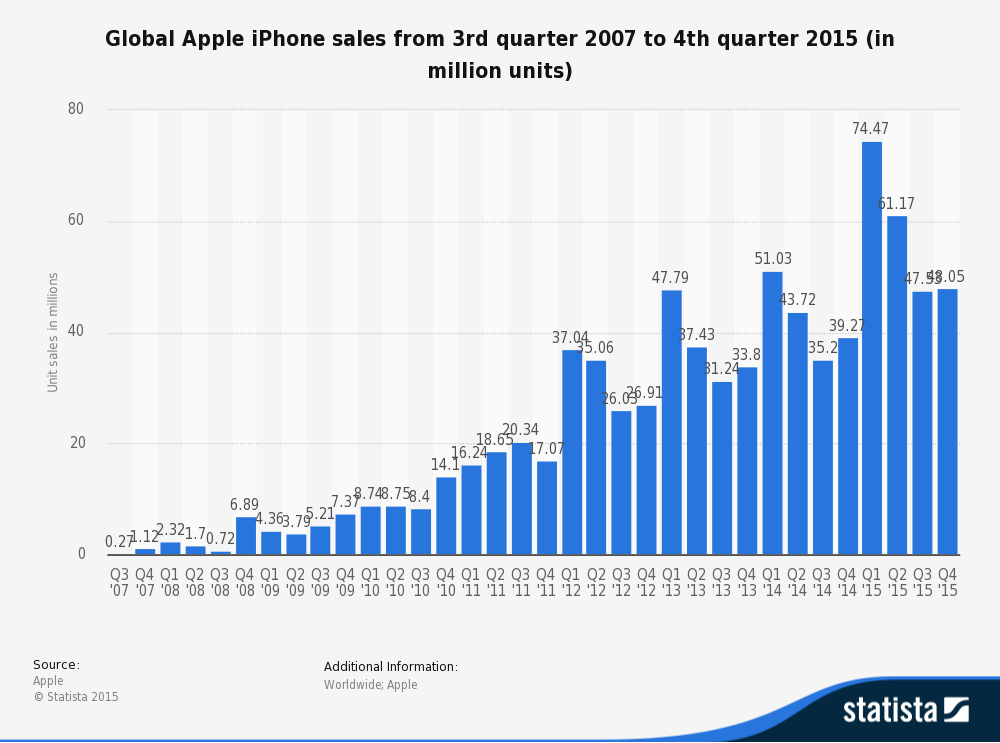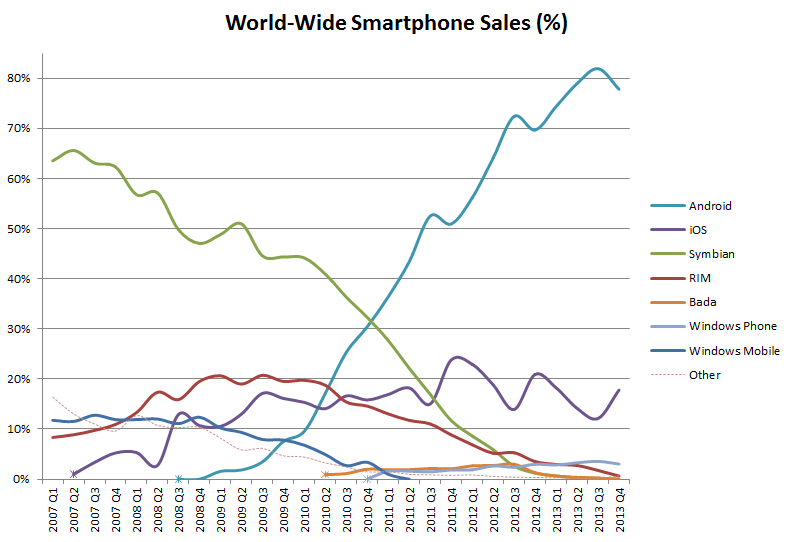A touchy subject
It's been nearly 10 years since Apple launched the first touch screen smartphone in 2007. Did you know however, that the first touch screen was actually invented in 1965? That's nearly fifty years ago to the day! Yet I wonder, would anybody have believed it, if told that by the year 2015, there'd be more touch-screen enabled smart phones and tablets, than human beings on the planet? Or by 2020, it is estimated that there will be 4.3 internet connected 'things' for every person?! That's something like 33 billion devices, with a hell of a lot of touch screens.
How time flies. It's hard to remember the world before the pivotal moment, when Steve Jobs took to the stage, presenting the first-generation and 'first of its kind' device, that unleashed a mobile revolution and quickly changing the way people interacted with electronic devices - and each other.
Up until this point, touch screens were kinda cool, but limited in their application. They were domain of high-end appliances (hi-fi systems, home alarms, way-too-expensive computer monitors...) sold to the Jones' family who needed to have the latest 'cool technology'... despite the fact that touch screens (at the time) were not necessarily leading to a better user experience. It took the evangelists at Apple to make that happen. I'm no Apple fan-boy, but I will certainly give credit to their UX designers.
When the original iPhone was launched, there were 1.39 million iPhones sold in Q3/Q4, and another 5.46 million units in 2008 up until the launch of the iPhone 2. That's a total of 6.85 million iPhones worldwide, in the space of about 12 months. Sounds like a lot? Yes, back then that was an incredible figure and alongside the earlier iPod, it resuscitated Apple and ensured they were once again at the forefront of technology and innovation. It's a huge figure, until you put it into perspective. Barely eight years later, in 2015, Apple sold over 231 million iPhones; a figure that dwarfs sales from 2007, which is barely 2.96% of last year's total (2015).

Yet for Apple's incredible sales figures, it's worth remembering that - despite pretty much inventing the market and technology behind the modern day smartphone - Apple currently holds onto merely a fraction of the overall market share, as the below graph demonstrates. (Sorry it's a little old, but still shows the impact competitors such as Android and Windows are having). Note the asterix against the purple line (where the iPhone was first announced in Q2, 2007) and the teal line, indicating the release of the first Android devices (Q3, 2008).

The rise and rise of smart-phones, tablets and other internet connected devices continues, with 2016 predicted to be a bumper year, and future forecasts showing no signs that the world has yet enough of them. Here are two interesting thoughts:
- According to Strategy Analytics the market for internet connected devices has exploded, and while there are something in order of 12 billion smart devices in existence currently, this is expected to triple in the space of a few short years, leading analysts to predict there will be 33 billion devices worldwide by 2020. Now these are not all just phones, tablets and laptops; the traditional devices we are all familiar with account for only about one-quarter of this figure. So, we're talking about the Internet of Things (IoT)... your fridge, scales, TV, Fitbit, wrist-watch, air conditioner, alarm system, home stereo, coffee mug, toilet seat, your water bottle... the list goes on. Still, all those gadgets need some kind of interface, and generally if it doesn't have a touch-screen of its own, it'll be controlled via an app remotely.
- Supporting this global market of smart devices, is a steady growth in the investment and manufacture of touch-screen technology. The global shipment forecast for touch-screen displays will more than double between 2012 (1.3 billion units shipped) and 2016 (2.8 billion units to ship). Think about that... we're now producing enough touch-screens every year, that every single person on the planet could have a brand new touch-friendly device every 3 years.
We're now producing enough touch-screens every year, that every single person on the planet could have a brand new touch-friendly device every 3 years
Of course, we all know that the love is not necessarily spread fairly. Those lucky enough to live in wealthy countries will probably take the lion's share. But it's not like anybody is missing out. These days smart-phones and tablets are as common as muck. Everybody has one, or has access to one, just not necessarily the latest, most flash one. Mobile internet access is as important to many as fresh water, electricity and housing. A basic need. We've even seen millions of refugees fleeing from the recent war-strife in the middle east, despite their situation, almost all are armed with smartphones.
What's far less common to see are desktop computers. Just like CRT televisions, overnight they suddenly vanished and now every time you see one, it's almost like stepping into a time-warp.
With so many touch-enabled devices floating around - and with the billions more that require smartphones or tablets to interface via the web or mobile app - our UX and visual designers certainly have their work cut-out for them. I won't go into it here but there's been plenty of discussion and discovery surrounding mobile and touch friendly interfaces. We often write about it on the Wiliam blog. It's important, because people's expectations and behaviour are changing and adapting to the new technology. Certainly kids these days don't know any different.
The other day I was driving around in my parents' car, and noticed that the radio seemed to have a touch interface. I'm tapping away trying to change the radio station, and nothing's responding. Eventually frustrated, and on the cusp of pushing my fat finger through the screen, I finally noticed the sticker above the screen proudly stating 'Not touch sensitive'. Yikes, why would you design the radio to look like a touch interface if it's not. And it proved to me that apart from this being a case of poor and misleading design, that I also now lived in a world where it was more than reasonable to expect that if something looked like a touch interface, it probably was.
Did you know that scientists and technicians are working on something called 'micro fluid' technology, to create buttons that 'rise up' from the surface of a touch-screen to create a 3D like feel? There are some interesting projects under way at the likes of Disney and Microsoft where the surface of the touch screen is manipulated to mimic the object being presented.
Suffice to say that touch-screens have come a long way in terms of technological advancement, and also in how they have infiltrated our lives, in more ways that we would have imagined. While also our understanding of touch interface design (both in terms of UX and visual design) continually improves, through continuous testing and evaluation, project by project.
To conclude, there's a nice info-graphic over at Computer Science Zone which shows a history of the touch-screen, some interesting statistics on devices and touch application, and also the science behind what is a touch screen and how do they work. Worth a look.







